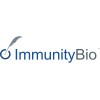
Nivolumab Plus Epacadostat in Combination With Chemotherapy Versus the EXTREME Regimen in Squamous...
Head and Neck CancerThe purpose of this study is to evaluate the safety and efficacy of the combination of nivolumab plus epacadostat in combination with chemotherapy in first-line recurrent or metastatic patients with squamous cell carcinoma of the head and neck (SCCHN) when compared to the standard of care (EXTREME regimen).

An Immuno-therapy Study of Nivolumab in Combination With Experimental Medication BMS-986205 Compared...
Head and Neck CancerThis is a study of Nivolumab in combination with experimental medication BMS-986205 compared to the standard of care EXTREME regimen in head and neck cancer that has come back after initial treatment, or is widespread when first diagnosed.

RM-1995 Photoimmunotherapy, as Monotherapy or Combined With Pembrolizumab, in Patients With Advanced...
Cutaneous Squamous Cell CarcinomaHead and Neck Squamous Cell CarcinomaA phase 1a/1b, open-label, RM-1995 drug-dose escalation study designed to evaluate the safety, tolerability, pharmacokinetics (PK), pharmacodynamics (PD), and preliminary efficacy of RM-1995 photoimmunotherapy treatment as monotherapy (phase 1a) or combined with pembrolizumab (phase 1b) in patients with cutaneous squamous cell carcinoma (cuSCC) or head and neck squamous cell carcinoma (HNSCC) that has progressed despite all available standard therapies.

Cemiplimab/Peg-Interferon-α in Advanced CSCC
Cutaneous Squamous Cell CarcinomaSquamous Cell Carcinoma1 moreThe primary purpose of this research study is to test the safety and possible harms of cemiplimab/peg-interferon-alpha, when it is given to participants at different dose levels. The researchers want to find out what effects (good and bad) cemiplimab/Peg-Interferon has on participants with advanced cutaneous squamous cell carcinoma (aCSCC) so that they can find the best dose to treat aCSCC and reduce side effects as much as possible.

Alpelisib in Combination With Carboplatin in Patients With Solid Tumors and HPV-Positive Squamous...
Solid TumorsAdult7 moreThis phase I/II trial tests the safety, side effects, and best dose of alpelisib and whether alpelisib and carboplatin work to shrink tumors in patients with solid tumors or human papillomavirus (HPV) positive squamous cell carcinoma that has spread to nearby tissue or lymph nodes (locally advanced) or has spread to other places in the body (metastatic). Alpelisib belongs to a group of medicines called phosphatidylinositol 3-kinase (PI3K) inhibitors. This means alpelisib blocks the activity of the PI3K protein. The PI3K pathway is well known to be involved in tumor cell multiplication and survival. Blocking PI3K may reduce the ability of certain cancers to grow. Carboplatin is an anticancer drug or chemotherapy drug that binds to DNA causing damage that prevents the DNA from replicating, which prevents the cells itself from reproducing. Giving alpelisib and carboplatin may help control the disease in patients with solid tumors and HPV positive squamous cell carcinoma.

Pre-operative Mocetinostat (MGCD0103) and Durvalumab (MEDI4736) (PRIMED) for Squamous Cell Carcinoma...
Squamous Cell CarcinomaHead And Neck2 moreThis is a Phase 1 Window of Opportunity study to evaluate the pharmacodynamic and immune effects of pre-operative therapy with Mocetinostat and Durvalumab on patients with squamous cell carcinoma of the oral cavity.

QUILT-3.047: NANT Head and Neck Squamous Cell Carcinoma (HNSCC) Vaccine: Combination Immunotherapy...
Head and Neck Squamous Cell CarcinomaThis is a phase 1b/2 study to evaluate the safety and efficacy of metronomic combination therapy in subjects with HNSCC who have progressed on or after previous chemotherapy and anti-PD-1/PD-L1 therapy.

Pembrolizumab and Induction Chemotherapy in Head and Neck Squamous Cell Carcinoma (PICH Study)
Head and Neck Squamous Cell Carcinoma (HNSCC)Non-randomized phase I/II, open-labeled clinical study, 1-arm, multicenter, of docetaxel (T), cisplatin (P), 5-fluorouracil (F) and pembrolizumab every 21 days for 3 cycles followed by radiotherapy (RT) combined with carboplatin in untreated unresectable locally-advanced Head and Neck Squamous Cell Carcinoma (HNSCC). The TPF and pembrolizumab combination will be called TP²F.

Phase I/II Study of Postoperative Adjuvant Chemoradiation for Advanced-Stage Cutaneous Squamous...
Recurrent Skin CancerRecurrent Squamous Cell Carcinoma of the Lip and Oral Cavity4 moreThis phase I/II trial studies the side effects and best dose of linsitinib when given together with erlotinib hydrochloride and radiation therapy after surgery in treating patients with advanced or recurrent head and neck cancer. Erlotinib hydrochloride and linsitinib may stop the growth of tumor cells by blocking some of the enzymes needed for cell growth. Radiation therapy uses high-energy x-rays to kill tumor cells. Giving radiation therapy together with erlotinib hydrochloride and linsitinib may kill more tumor cells. Giving these treatments after surgery may kill any tumor cells that remain after surgery.

Phase 1b Food Based Modulation of Biomarkers in Human Tissues at High-Risk for Oral Cancer.
Metastatic Squamous Neck Cancer With Occult Primary Squamous Cell CarcinomaSalivary Gland Squamous Cell Carcinoma56 moreThis randomized phase I/II trial studies the side effects and best way to give lyophilized black raspberries in preventing oral cancer in high-risk patients previously diagnosed with stage I-IV or in situ head and neck cancer. Chemoprevention is the use of certain drugs to keep cancer from forming. The use of lyophilized black raspberries may prevent oral cancer. Studying samples of oral cavity scrapings, blood, urine, and saliva in the laboratory from patients receiving lyophilized black raspberries may help doctors learn more about changes that occur in DNA and the effect of lyophilized back raspberries on biomarkers.
